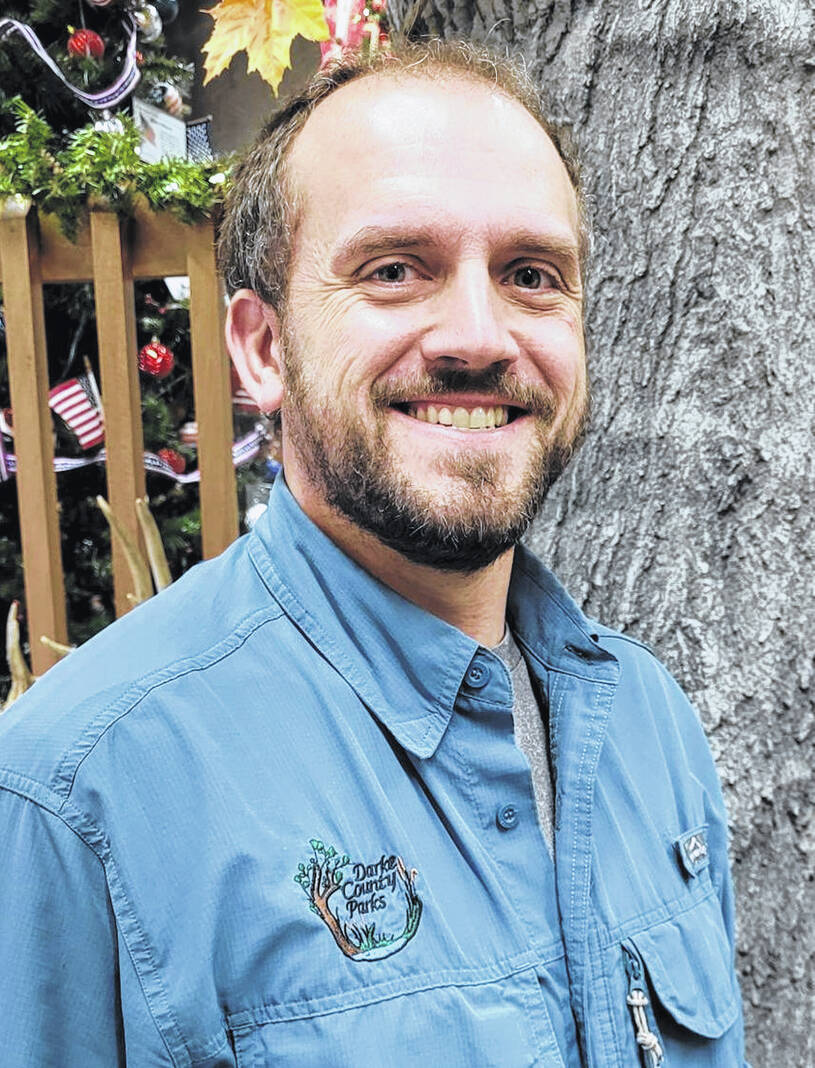
By Robb Clifford
Darke County Parks
Spring! Rebirth; Regrowth; Revival… these terms bring excitement to our minds after a long cold winter. The natural world heralds the season as the winter snows melt away leaving an ever-increasing wash of green and color behind the white of winter. The sap within the trees begins to flow with each thaw, prepping the leaf buds for the spring burst. The bird’s song increases each day, finally reaching a crescendo when the neo-tropical migrants have filled our woods and yards with color and music. Various mammals awaken from their long winter slumber, wiping the sleep out of their eyes, looking for a fresh meal. While animal activity is exciting, it’s the plants that enliven the senses.
The variety of greens that spread, first along the forest floor and then creeping skyward throughout the land, is a sight that easily warms even the coldest hearts. Soon after the first greens, the first flowers of the spring begin to bloom. Initially, nothing more than minuscule specks of white and black of the Harbinger-of-Spring bloom. Eventually, flowering plants will cover the ground and tree branches bringing both new colors and fresh scents to the air. Next, the bold yellows of the Dandelion and the delicate pink-red of the Redbud dazzle the eyes. As these flowers make their appearance, the insect world awakens and sets to work in the busy task of pollination. Flies, bees, and others venture out to gather and feed on as many flowers as possible during the warmest parts of the day. Many of these first blooms are critical for the survival of these dismissible insects and in the long term, for us humans as well. Without the honeybee and other pollinators, our food supply would take a drastic turn for the bland. Easily assisting with the production of a majority of our foods, pollinators are vital to us. With the increasingly important role of pollinators and our food sources, it may be time to rethink the annual war against dandelions. Could we not strive to think less of rich green golf courses instead of a vibrant lively meadow awash with color? How bad would it be if you allowed that clover, plantain, or other “weed” plant to help boost the biodiversity within your yard? The sharp decline of so many insects, be they butterflies, bees, or the humble firefly, should be cause for concern. Sure there are some benefits for picnics, crops, and fewer car washes, but as we’ve been shown time and time again; everything in nature is connected and it becomes much harder to undo what is done.
Many of these early spring plants were critical for our ancestors’ diets as well. After a long cold winter, anything edible and green was a welcomed sight after months of dried, stored foods. The Dandelion once again comes to mind in its use as a spring tonic. Leaves and flower salads make for an excellent spring meal and the medicinal components of this powerful herb may just leave you a bit healthier!
Each year, we grow excited for the coming season of rebirth and growth, only to look at the best way to wage war upon it a short while later. This year, I challenge you to look for ways to encourage nature into your yards and hearts. Is there a patch of grass where you could plant a new garden of butterfly, honeybee, and hummingbird favorites? Do you need to mow every acre you own? Why not provide food for wildlife by allowing more of your yard to be herbicide-free? Could you plant a native shrub or tree in some excessively grassy location on your lawn? There are many ways to bring nature to your yard, whether you go big or stay small!




